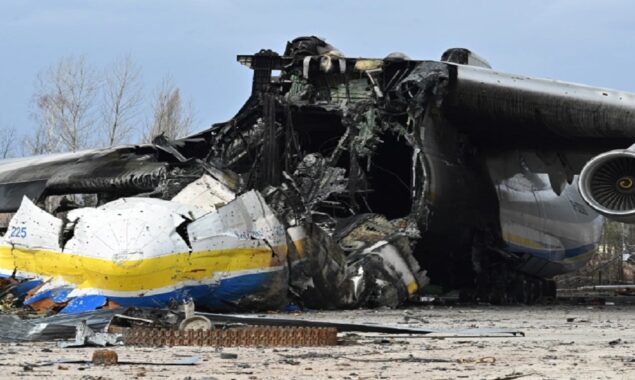
The wrecked Antonov AN-225 has become an everlasting memory for aviation aficionados all around the world.
Built in the 1980s to transport the Soviet space shuttle, the plane had a second life after the Cold War as the world’s largest cargo transporter, setting numerous records before being destroyed at its home base, Hostomel airfield outside Kyiv.
Antonov Company tweeted, “The dream will never die.”
The plane’s nickname is “Mriya,” which refers to dream in Ukrainian.
The whole world poured in solidarity for the cause.
CNN’s Vasco Cotovio saw wreckage closely, when he visited Hostomel airfield. He visited with other CNN journalists and the Ukrainian National Police.
“Hostomel was the scene of intense fighting between Russian and Ukrainian forces since very early in the war,” he says.
“Moscow’s forces tried to seize the airfield to use it as a forward operating position to which they could fly in additional land units. To do that, they mounted an air assault with attack helicopters.”
“They seemed to have had some initial success, but the Ukrainian response was very quick, hitting the airfield fast and strong — to prevent any sort of landing,” he says.
There was no possibility of repairing.
“The nose of the plane was completely destroyed, seemingly the victim of a direct artillery hit,” Cotovio says.
“In addition to that, there was extensive damage to the wings and some of the engines. The tail end section was spared from any large impacts and has a few holes caused by either shrapnel or bullets.”
“Had it not been for the direct hit on the nose, the AN-225 might have been repairable,” he says.
According to Andrii Sovenko, a Kyiv-based engineer, the center part of the fuselage has been destroyed.
“Restoring them will be the hardest,” he says. “This is due to the fact that most of the various electrical systems, pumps and filters used on the AN-225 are all from the 1980s.”
“They are simply no longer being made, so it’s unlikely that they can be restored exactly in the way they were,” adding to the conversation.
There’s some good news that parts of the wings, including aerodynamic features like flaps and ailerons, appear to have just minimal damage and may be salvaged.
The majority of the six engines appear to be in good working order, and the plane’s entire tail portion is just damaged by shrapnel, so it’s in good shape.
Sovenko, who wrote a book about the history of Antonov Airlines, concured that the plane at Hostomel can’t be repaired.
He said, “I am an optimist. I sincerely and deeply wish that Antonov aircraft will continue to fly in the skies of the future.”
Sovenko added, “But I’m also a realist. And I fully understand that the costs necessary to build the second Mriya will have to be correlated with the financial capabilities of Antonov after the war, as well as with the expected income from the operation of this aircraft.”
Read More News On
Catch all the International News, Breaking News Event and Latest News Updates on The BOL News
Download The BOL News App to get the Daily News Update & Follow us on Google News.




